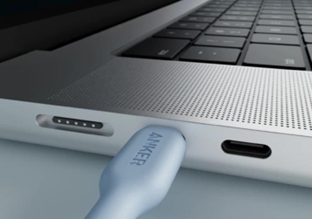Mention
USB, everyone is certainly no stranger, this may be the most used interface in
our current life, but no one. There is a USB port on the phone (especially
Android), there is a USB port on the portable hard drive, there is a printer,
and there is a camera; It can even be said that the USB interface can be seen
on almost all devices that need to be charged and need to be used for data
transmission. But some netizens will ask, my phone is not a USB interface ah,
is an elliptical interface, USB interface so big mobile phone how can it be
installed? In this blog, we will briefly talk about the history of USB
interface.

History of USB interface
Definition
The
full name of USB is Universal Serial Bus, also known as Universal Serial Bus,
which is a serial bus standard that connects the internal system of the
computer with external devices and is also a technical specification. USB was
developed by the USB Standardization Organization (USB-IF) initiated by Intel
and Microsoft. type-c is a new interface developed by the USB standardization
organization in order to solve the drawbacks such as the inconsistency of the
physical interface specifications of the USB interface for a long time and the
unidirectional transmission of electrical energy.
USB Interface Type
First
of all, we start with the interface type, as the name suggests, is the
interface category, and shape. Which is roughly divided into Type-A, Type-B,
and Type-C three kinds: Type-A is our most common computer USB flash drive,
keyboard, and mouse interface; Type-B is common in printers, scanners,
compounding machines, and other devices. The Mini-B interface is often seen in
old MP3, and old mobile card speakers, and has been basically no longer used in
recent years. The Micro-B interface has been used for a long time in previous
Android phones and even became a standard interface, and now it can still be
seen in some relatively low-end devices.
Generation of Type-c
Later,
USB 3.0 gradually became popular, and these commonly used interfaces have also
undergone some changes. In terms of application, these interfaces of USB 3.0
have gradually replaced the old interfaces, especially the Micro-B interface,
which is still carried in most mobile hard disks at present. However, later, as
the phone became thinner and thinner, combined with the characteristics of the
Micro-B interface easy to damage, and Apple made the Lighting interface at that
time, the interface had ease of use and durability to beat other interfaces. As
a result, the Type-C interface came into being, positive and negative
pluggable, with fast transmission speed, faster charging speed, and more
durability, it can be said that it really played a turnaround, so that it later
became the most mainstream interface.
The Future of Type-C
With
the widespread use of USB Type-C interfaces in mobile terminals, PCS, consumer
electronics, and other fields, its future development trend has attracted much
attention. Now, the USB PD protocol is already one of the fast-charging
solutions to support Type-C devices, but with the increasing battery capacity,
it is expected that Type-C will appear in the future more than 100W high power
output solutions, to meet the growing charging needs of users, but also to
extend the service life of mobile devices. Second, Type-C will become a common
interface for more devices. In laptops, tablets, and other devices, Type-C has
become the mainstream interface, and many charging manufacturers have also
carried out research and development in the direction of "usb c charger", such as
Anker, committed to providing reliable USB-C chargers, leading type-c
innovation. In addition, Type-C will also show more innovation in connectivity.
For example, with the rapid development of technologies such as VR and AR,
Type-C is also expected to become a necessary interface for connecting VR/AR
devices.

Conclusion
All
in all, the Type-C interface still has a wide range of application prospects
and development space in the future. In terms of fast charging, high-speed data
transmission, etc., it will continue to be the basic interface for all kinds of
devices. At the same time, Type-C also has further development opportunities in
the fields of power output standards, universal interfaces, and connection
innovation. Therefore, we can expect that more new devices and applications
will adopt the Type-C interface and play it to the extreme to bring users a
more convenient and efficient technology life experience.
